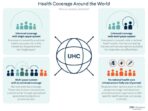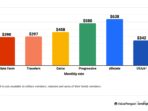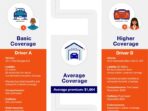Insurance Premium Before Or After Tax – This historical material is “frozen in time”. This site is no longer updated and links to external websites and some internal pages cannot work.
The American Rescue Plan (ARP) Act extends financial assistance to individuals and families to increase the power of health insurance coverage in the Cheap Care Act (ACA) market. With a significant increase in premium tax credit for people who are eligible for assistance under ACA, expansion, first, reaches people who reach more than 400 percent of the Federal Poverty Level (FPL), effectively blocking the premium contribution expected at 8.5 percent of annual income. Although this increase in credit is determined to end at the end of 2022, the Inflation Reduction Act extends it through 2025.
Insurance Premium Before Or After Tax

Since the ARP, almost all users have purchased market coverage have benefited from increasing premium tax credit and resulting in their premiums. For the year 2024, 92 percent of market users registered for coverage received this subsidy of 19.7 million people. Figure 1 shows the average premium for users on healthcare with increased premium tax credit by 2024. For users who earn up to 400 percent, premium tax increases reducing insurance costs for this year by $ 300 to $ 860. Now they save an average of $ 3, 200 a year with this policy, after their premiums after their premiums. It is estimated that about half of the consumers receiving credit in this group have an income of between 400 and 500 percent FPL or between $ 60, 240 and $ 75, 300 for a person.
Aca Marketplace Subsidies Expiration
These advantages give the family the choice to use pockets and savings for other domestic needs, or apply for premium savings towards the purchase of schemes that provide more financial security. Schemes with high level coverage, depicted by metal levels (bronze, silver, gold, platinum) require low -cost partnerships by consumers and provide better financial security for medical expenses. By reducing premium costs, increased premium taxes makes it easier to “upgrade” to higher coverage schemes for consumers.
High protection level schemes improve financial security in many ways, including reducing office copies and reducing scheme cutting (users pay the amount before payment of insurance scheme begins). How many additional coverage extended premium tax credit allows consumers to buy?
We review only one dimension of the plans – annual deductions. We estimate that consumers can usually reduce their annual cuts using increased premium tax credit to buy plans with low. [2] Diagram 2 shows a reduction in estimates in annual deductions by domestic income. This amount is around $ 345 to $ 760 deficiency for users with 400 percent FPL. Meanwhile, people with more than 400 percent of FPL, who are not eligible for previously premium tax credit, can reduce their annual amount of less than $ 2, 370.
This policy is one of the many who has led market registration that breaks the record in the last three years. By reducing coverage costs, increased premium tax credit allows more consumers to get coverage in the market and buy high quality coverage. Although registration for all levels of coverage has increased, there is a huge increase in the number of users who sign up for coverage under the Silver, Gold and Platinum schemes. These high coverage plans have low or medium cuts unlike bronze schemes, usually high cutting and cost -sharing requirements. Greater strength of high quality coverage with increased premium tax credit may encourage more users to determine that it means to buy coverage.
Section 80d: Deductions For Medical & Health Insurance
As seen in Figure 3, the number of users signing up for the Silver, Gold and Platinum market schemes for the 2024 – 14.7 million plan – was about 7.7 million, which registered in the 2021 plan, before the policy change. Increased high -level coverage registration may increase the use of high health care and possibly significant implications for population health and future healthcare expenses.
The increase in high coverage schemes reflects both new users entering the market, as well as better coverage options made by existing users who can upgrade their plan coverage levels, maintain their coverage levels but save money, or save some of their second combinations. We find evidence that current health care. GOV users are more likely to upgrade their plans from bronze coverage levels during the first open registration period after the policy, compared to the increase in the two -year open registration period. The rate of improvement, defined as the interest of consumers in the market and moves to a higher level of bronze, especially for consumers with 250 percent FPL revenue from FPL. Among these groups, 27 percent are high -level coverage schemes from 2021 to 2022 from bronze, the rate is about 2 times higher than the rate of improvement seen in the previous years (see Figure 4). In particular, consumers at this income level are eligible for additional cost sharing deductions available in silver, but not in the bronze scheme. This shows that additional premium subsidies play an important role in helping low Americans buy coverage designed to provide them with more economical access to healthcare. After the policy for other income groups, the bronze increase also increased, despite their increase in increasing (before and after the policy) of 250 percent lower than the FPL group.
Finally, the increase in premium tax credit implemented in 2021 and extended to 2025 has allowed more Americans to register for cheap health insurance coverage, save money and improve the quality of their coverage. The Biden-Heris administration has called for Congress to make this subsidy permanent.

[1] Analysis does not include 0.1 percent of users on healthcare. In addition, the analysis here does not consider the possibility of saving on premiums, which is included in market coverage with increased premium tax credit. For example, the analysis of the urban institute shows that, by attracting healthy people in the market and reducing the average health risk among the named people, also increases premium tax credit outcomes among individuals who are not directly subsidized.
Premium Tax Credit Improvements Must Be Extended To Prevent Steep Rise In Health Care Costs
] We conduct individual analysis by Bin Income for qualifications for additional cost sharing deductions and gold and platinum plans for income groups is 200 percent FPL and bottom and bottom as it has more than beamful value for silver plans with cost sharing cuts for these groups or similar to this high coverage level plan. We found that monthly premiums were associated with a decrease of $ 9- $ 14 in the annual deduction between each additional dollar scheme, depending on the cost sharing in the plan options offered in the income group. In the future, we use increased premium tax credit estimates to check that if they apply for this amount for an increase in plans then consumers can reduce their deductions. Insurance premiums are the person or amount of payment for the insurance policy for the business. Insurance premiums are paid on a basis covering various individuals and business risks. If the policalowner fails to pay the premium, the insurance company may cancel the policy.
When you sign up for an insurance policy, your insurer will impose your premium. This is the amount you pay for applying for a policy. Policyholders remove their infection premium from Matchoz from the Vasvaral option. Some insurers allow policyholders to pay insurance premiums in installments – such as monthly or annual – while others may require advance payments each year before protection begins.
There may be additional charges payable to insurers at the top of the premium, including tax fees or services.
Insurance companies make money in bonds by collecting premiums and investing these income in safe financial instruments, such as bonds. Once the insurance company gets a premium by providing security, it becomes the fourth carrier. Unarmed premiums also represent liabilities, as insurers must provide coverage for claims made to the policy.
Term Insurance Tax Benefits: Can You Claim Both 80c & 80d?
Insurance companies consider various factors to determine how many premiums will apply to a particular policy for a set of coverage. Although some of these factors are common in insurance (eg age insured), others are different -qualified













